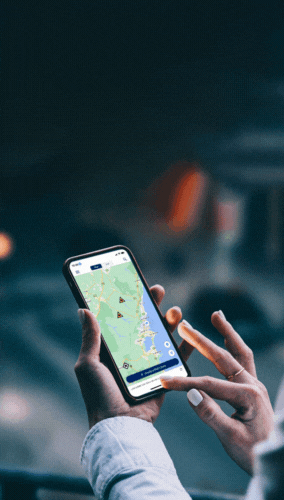Electricity, gas and water safety information
Storms and floods can damage utility networks and impact the supply of essential services like electricity, water, natural gas, sewage, and telecommunications to homes and businesses. Hazards may remain after severe weather events, so it’s important to know your risks and take adequate precautions before, during, and after an emergency.
What you can do now to get ready
It’s important to prepare your home or business to keep people and property safe. By preparing for emergencies, you can reduce the impacts and recover better.
- Locate your utilities and learn how to turn off the mains supply for power, gas and water before an emergency.
- If possible, consider raising power points and air-conditioning units, and have a safety switch installed by a licensed electrician and test it regularly.
- Switch off and unplug outside electrical equipment like TVs and non-fixed aerials when not in use and store them in a dry area.
- Consider your need for a backup power source, especially for critical appliances like medical devices.
- Plan for power outages by keeping torches, extra batteries and a supply of non-electric lighting and heating options in an easily accessible location and in your Emergency Kit.
- Ensure you have adequate home and contents insurance coverage for floods and storms, including flood insurance if you live in a high-risk area. Check your insurance policy is up to date.
Before severe weather
- Storms can cause power surges. Unplug sensitive appliances such as computers, gaming consoles, smart devices and televisions before severe weather hits.
- Ensure all electrical and gas-powered appliances are turned off. There is a risk of fire if power is restored and there is no one at the property.
- Charge your mobile phone, portable battery chargers and other devices before a storm hits.
- Learn more about how you can prepare your property during storms and floods.
During an emergency
Always follow instructions and directions from local authorities and be ready to evacuate if necessary.
- Stay away from powerlines, trees and watercourses. Always assume fallen powerlines are live and at least 8 metres or 2 car lengths away. Do not approach them or walk under them. Trees that have fallen across powerlines could also be electrified. Do not attempt to remove trees or branches.
- If you have already lost power, turn off and unplug electrical equipment. If possible, remove and relocate portable appliances to a higher location if there is a risk of flooding.
- Don't connect portable generators to the electrical wiring of your house or office unless a licensed electrician has installed a changeover switch. Always read the manufacturer's instructions very carefully before doing so.
- Before evacuating, turn off the gas and electricity to your home. Do not touch any electrical equipment if you are standing in water or if your hands are wet.
After an emergency
After an evacuation, NSW SES will advise when it is safe for residents and businesses to return to a flood affected area. Do not go back to your property if the emergency is still active.
- Don't enter a damaged building or structure, unless authorities tell you it is safe.
- If your electricity, gas or water supply has been damaged or disconnected, do not attempt to reconnect the service yourself. Take extra care around your switchboard.
- All electrical connections and appliances affected by water should be inspected by a licensed electrician before you use them again.
- Take care when cleaning up, as fallen powerlines hidden in branches, debris or water can be extremely dangerous. If you find a fallen power line, keep well away, warn others and call the electricity distributor in your area or emergency services on 000.
- Ensure the structural stability of your property before entering. Check for damage to windows, walls and the roof and be especially cautious of potential contaminants including asbestos.
- Gas appliances and gas bottles that have been exposed to floodwater should be inspected for safety before use.
If you are using a generator
Power from generators can be dangerous, stay safe by:
- Run the generator outdoors or in a well-ventilated area.
- Connect your generator to your house electrical wiring using a generator change-over switch and appropriate socket. These switches must be installed by a licensed electrician.
- Do not connect your generator to your house using a power point on a power circuit or any other connection point. This can cause dangerous 'back-feeding'.
- Ensure all leads used to connect your generator are in good working order.
- Do not exceed the generator's load rating and follow the manufacturer's instructions.
If you are using boats for access
Boats used in flood conditions may unintentionally come closer to overhead powerlines than in normal conditions. Be aware of low hanging powerlines, or submerged poles, streetlights and wires that could be live.
Moving around your area in a boat comes with a few risks – particularly reduced powerline height clearances. Flood will lift you closer to powerlines, so stay alert for any dangerous nearby objects.
Related information
Electricity
There are three electricity distributors in NSW. Each is responsible for a separate geographic region of New South Wales.
Gas
There are four gas distributors in NSW. Each is responsible for a separate geographic region of New South Wales.



